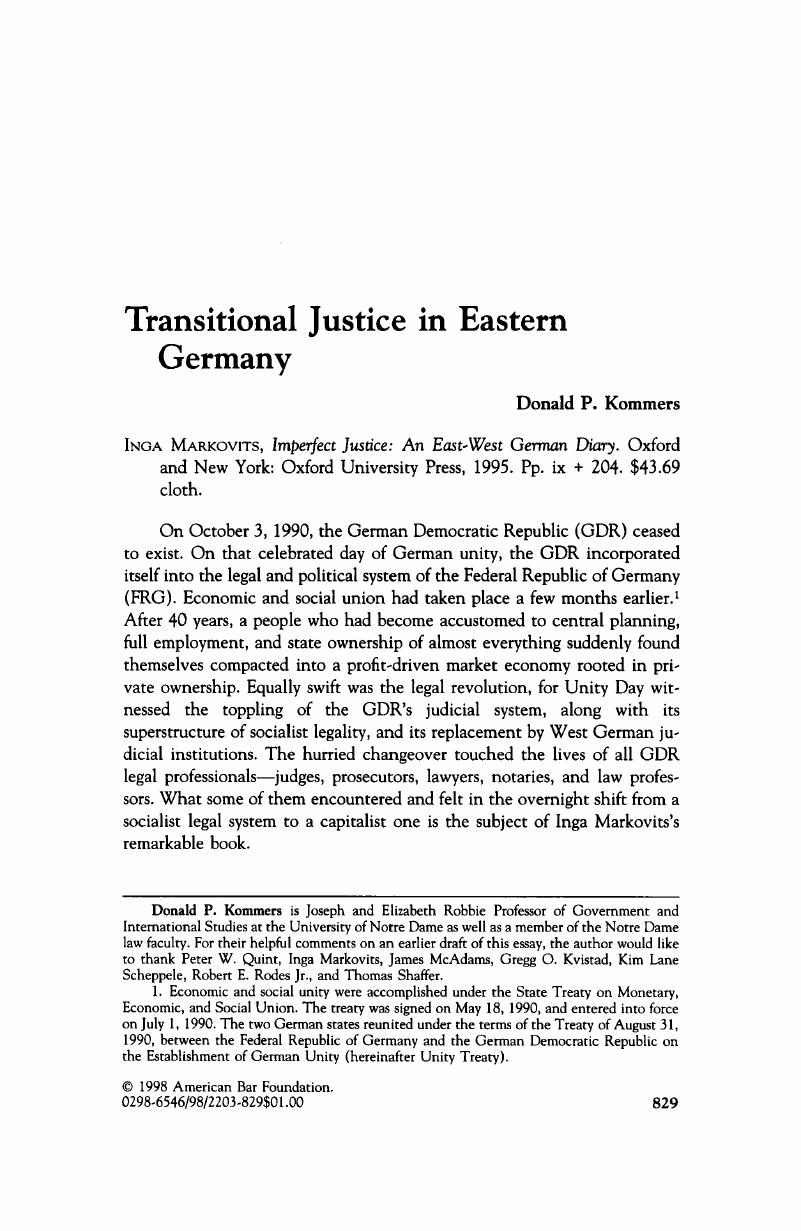No CrossRef data available.
Article contents
Transitional Justice in Eastern Germany
Published online by Cambridge University Press: 27 December 2018
Abstract
An abstract is not available for this content so a preview has been provided. Please use the Get access link above for information on how to access this content.

- Type
- Review Essay
- Information
- Copyright
- Copyright © American Bar Foundation, 1997
References
Ackerman, Bruce. 1992. The Future of Liberal Revolution. New Haven and London: Yale University Press.Google Scholar
Fakultät far Rechtswissenschaft. No date. Festakt zu Grändung der Juristischen Fakultät: Technische Universität Dresden. Dresden: Technische Universitat Dresden.Google Scholar
Havel, Václav. 1989. Living the Truth, edited by Vladislav, Jan. London: Faber and Faber.Google Scholar
Markovits, Inga. 1971. Marriage and the State: A Comparative Look at East and West German Family Law. Stanford Law Review
24: 116–99.Google Scholar
Markovits, . 1978. Socialist vs. Bourgeois Rights — An East-West German Comparison. University of. Chicago Law Review
45: 612–36.Google Scholar
Markovits, . 1982. Law or Order — Constitutionalism and Legality in Eastern Europe. Stanford Law Review
34: 513–613.Google Scholar
Markovits, . 1986. Pursuing One's Rights Under Socialism. Stanford Law Review
38: 689–761.Google Scholar
Markovits, . 1996. Children of a Lesser God: GDR Lawyers in Post-Socialist Germany. Michigan Law Review
94: 2270–2308.Google Scholar
McAdams, A. James. 1993a. Revisiting the Ostpolitik in the 1990's. German Politics and Society
30: 49–60.Google Scholar
McAdams, A. James. 1993b. Germany Divided: From the Wall to Reunification. Princeton, N.J.: Princeton University Press.Google Scholar
Meador, John Daniel. 1986. Impressions of Law in East Germany. Charlottesville: University Press of Virginia.Google Scholar
Probst, Lothar. 1993. German Pasts, Germany's Future: Intellectual Controversies Since Reunification. German Politics and Society
30: 21–33.Google Scholar
Scheppele, Kim Lane. 1996. The History of Normalcy: Rethinking Legal Autonomy and the Relative Dependence of Law at the End of the Soviet Empire. Law & Society Review
30: 627–50.Google Scholar
Quint, Peter E.
1997. The Imperfect Union: Constitutional Structures of German Unification Princeton, N.J.: Princeton University Press.Google Scholar
Rosenberg, Tina. 1995. The Haunted Land: Facing Europe's Ghosts After Communism. New York: Vintage Books.Google Scholar
Torpey, John. 1993. The Post-Unification Left and the Appropriation of History. German Politics and Society
30: 7–20.Google Scholar




